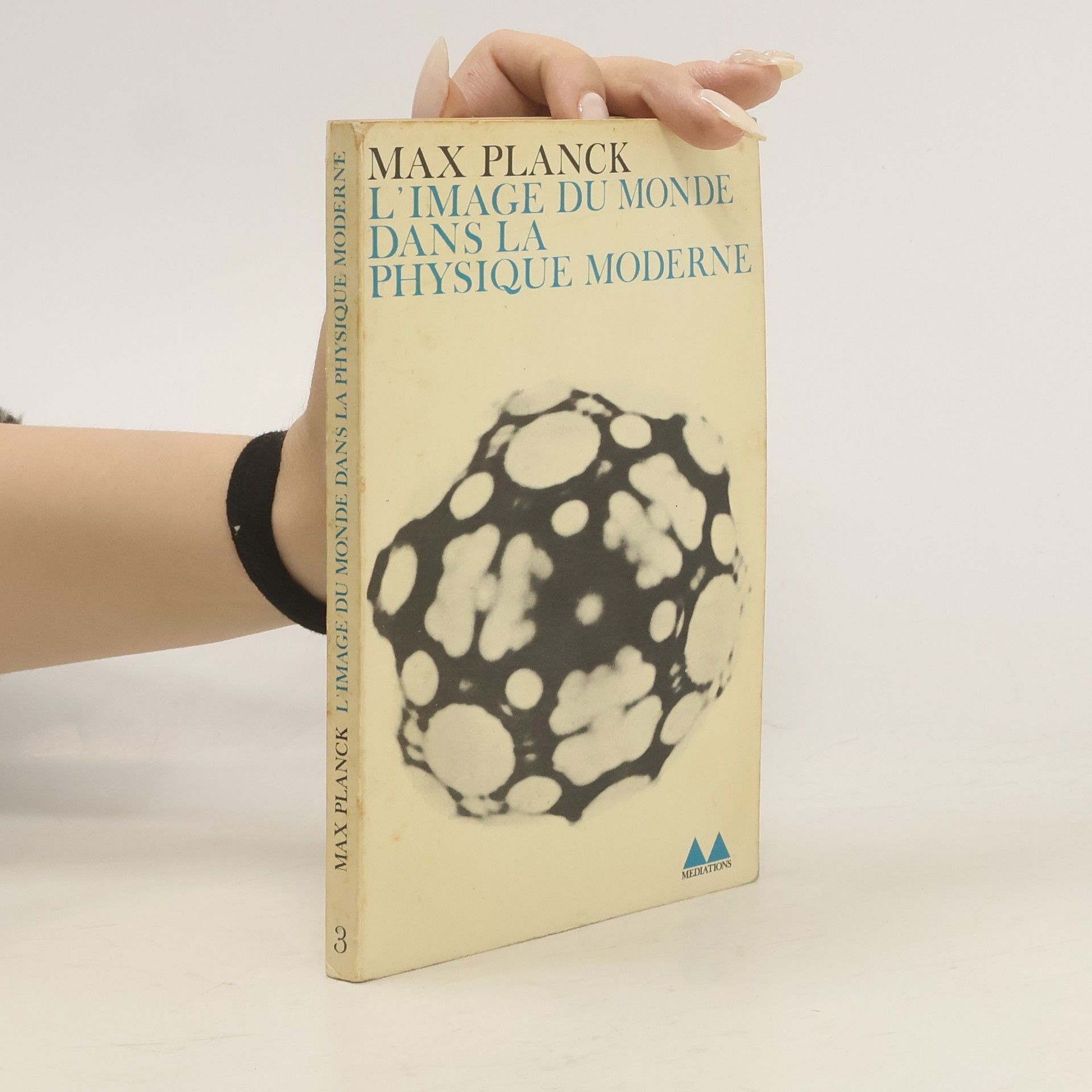Max Planck Livres
Ce physicien théoricien allemand est à l'origine de la théorie quantique, qui a fondamentalement modifié notre compréhension des processus atomiques et subatomiques. Son travail constitue, avec la théorie de la relativité d'Einstein, l'un des deux piliers de la physique moderne du XXe siècle. Son impact profond sur la science et notre compréhension de l'univers est immense, et ses idées révolutionnaires continuent de façonner la recherche en physique.






The Universe in the Light of Modern Physics
- 154pages
- 6 heures de lecture
This volume includes new publications of Max Planck's book "The Universe in the Light of Modern Physics" and four papers: "Phantom Problems in Science," "The Meaning and Limits of Exact Science," "The Concept of Causality in Physics" and "Religion and Natural Science." As it had been Planck's intention that his books and "essays should reach a wider circle of readers," this volume should be of interest to physicists, philosophers of science, students and all interested in the foundations and philosophy of physics.
Eight Lectures of Theoretical Physics
- 148pages
- 6 heures de lecture
Renowned physicist Max Planck presents a series of insightful lectures that delve into key concepts of theoretical physics. Topics include the principles of reversibility and irreversibility, thermodynamic equilibrium in dilute solutions, and the atomistic theory of matter. Planck also explores the equation of state for monatomic gases, radiation, electrodynamics, statistical theory, the principle of least work, and the principle of relativity, making complex ideas accessible to readers interested in the foundations of modern physics.
A Survey of Physics: A Collection of Lectures and Essays
- 164pages
- 6 heures de lecture
This volume includes new publications of Max Planck's book "A Survey of A Collection of Lectures and Essays" and his Nobel Prize Address "The Origin and Development of the Quantum Theory." Planck’s book contains eight essays on what he considered to be the most important and urgent issues in physics at the beginning of the 20th century. As Planck himself put it "the essays should reach a wider circle of readers," the book should prove attractive to experts, students and all interested in the foundations and philosophy of physics. Physicists would, undoubtedly, be most interested in the last essay (and in Planck's Nobel Prize Address) in which Planck gave a detailed account of how he overcame the difficulties on the road that led him to the quantum theory.
The Origin and Development of the Quantum Theory
Being the Nobel Prize Address Delivered Before the Royal Swedish Academy of Sciences at Stockholm, 2 June, 1920
- 20pages
- 1 heure de lecture
The book explores the intriguing paradox of Max Planck, the founder of Quantum Theory, who revolutionized our understanding of atomic matter yet remained skeptical about the implications of his own work. It delves into his personal beliefs and the broader philosophical questions raised by the theory, offering insights into the mind of a scientist caught between groundbreaking discoveries and his own doubts. This narrative highlights the complexities of scientific advancement and the human element behind revolutionary ideas.
The Theory of Heat Radiation
- 242pages
- 9 heures de lecture
The book delves into the foundational aspects of electrodynamics and thermodynamics, exploring key concepts such as entropy and probability. It examines the behavior of oscillators in a constant radiation field and discusses irreversible radiation processes. Through these topics, the text aims to provide a comprehensive understanding of the fundamental principles governing physical systems and their interactions with radiation.
Theory of Heat; Being Volume V of "Introduction to Theoretical Physics" ..; 5
- 318pages
- 12 heures de lecture
Recognized for its cultural significance, this work is considered a vital part of the collective knowledge that shapes our civilization. It offers insights and perspectives that contribute to our understanding of history and culture.
Vortrag.
Vorträge, Reden, Erinnerungen
- 224pages
- 8 heures de lecture
MAX PLANCK (1858-1947) ist als Begründer der Quantentheorie der herausragende Physiker Deutschlands. 1918 erhielt er den Nobelpreis für Physik. Er hat sich in Wort und Schrift zu brennenden Problemen aus Kultur, Religion und Wissenschaft geäußert. Viele dieser Beiträge haben bis heute ihre Aussagekraft nicht verloren. Die vorliegende Sammlung, zusammengestellt und herausgegeben von Hans Roos und Armin Hermann, würdigt den Menschen und Physiker anläßlich des 100jährigen Jubiläums der Geburtsstunde der Quantentheorie (14.12.1900). Das Buch richtet sich an eine breite Leserschaft.

